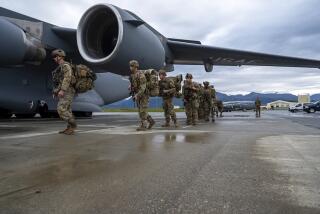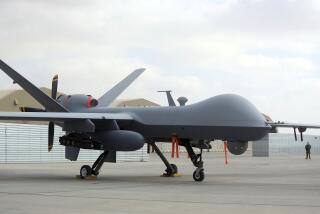Report on New Soviet Radar Not Confirmed
- Share via
WASHINGTON — The Reagan Administration declined comment Friday on a report that it has determined that the Soviets are building two new missile defense radars, but a spokesman said such a development could heighten U.S. concern about Soviet intentions.
Pentagon and State Department spokesmen declined comment on the Wall Street Journal report quoting unnamed senior American officials as saying U.S. intelligence has detected the two new radar installations, the seventh and eighth of their kind, near the Soviet Union’s western border and determined they will be aimed at the Atlantic and Mediterranean.
Such installations would not in themselves violate the 1972 Anti-Ballistic Missile Treaty between the United States and Soviet Union, but would be a violation if part of a nationwide ABM system, which is expressly prohibited.
Matthew Murphy, a spokesman for the Arms Control and Disarmament Agency, said in response to the report, “We don’t comment on intelligence matters.”
But reading a written statement, he noted longstanding American concern that the Soviets “may be preparing an ABM territorial defense.
‘Could Heighten Concern’
“The construction of additional LPARs--Large, Phased-Array Radars, by the Soviets could heighten this concern,” he said.
The statement noted the ABM treaty “permits such radars if they are located on the periphery of a country oriented outward and if they are for early warning.”
But it said other Soviet ABM-related activities, including construction of the Krasnoyarsk radar facility in Siberia, which the Administration contends is an ABM treaty violation, “give cause for concern” that the Soviets may be preparing a nationwide ABM defense.
The Journal said American intelligence analysts believe the new radars fill the final gap in the Soviets’ network of such facilities, which are capable of detecting and tracking down incoming ballistic missiles at great distances.
The report comes at a crucial juncture of U.S.-Soviet efforts to negotiate a new arms control agreement and at a time of great internal debate in the Administration as to whether the Soviets can be trusted to keep agreements, such as the ABM treaty, already in force.
More to Read
Sign up for Essential California
The most important California stories and recommendations in your inbox every morning.
You may occasionally receive promotional content from the Los Angeles Times.













